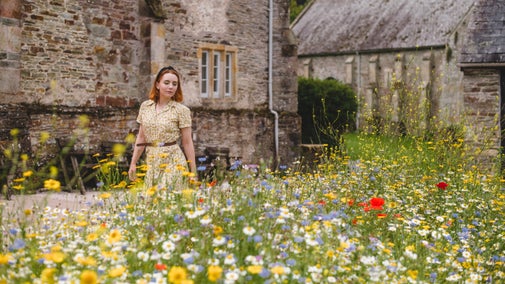‘Bigger, better and more joined up’ is our mantra, and since 2015, Buckland Abbey has been working to meet the aims of the National Trust’s Land, Outdoors and Nature strategy; creating and restoring priority habitats, ensuring nature recovery and improving biodiversity, carbon sequestration and natural flood management.
We have explored our historic environment and natural heritage aiming to restore some historical features to the landscape, such as an orchard thought to be one of the first of its kind in Devon.
We’ll be planting over 30,000 trees including 356 fruit and nut trees to bring a medieval landscape to life.
What’s being planted?
We are planting a variety of 21 different broadleaved tree species. To create well-structured woodlands, we have categorised the species into 3 groups:
- Primary species – the dominant trees in an ecosystem, they often have large canopies, deep root systems and long lifespans. Examples: sessile oak, lime, elm, hornbeam, beech
- Secondary species – the trees you will likely find in the understory layers. Examples: hazel, crab apple, wild cherry, sycamore, rowan, spindle.
- Nursery species – fast growing, thorny, shrubby trees we hope will protect the other species. Examples: holly, hawthorn, blackthorn.
On average, we are planting 40% primary species, and 30% secondary and nursery species. We hope these species will create diverse, native deciduous woodlands that will benefit wildlife and blend in with local woodlands.
Additionally, 356 fruit and nut trees will be planted in the new orchard. These include different species of local Tamar Valley apple and cherry varieties, and damson, quince, pear, cobnut and hazelnut trees.
What are the other benefits of this project?
- Habitat creation: our aim is to create a ‘mosaic’ of habitats at Buckland Abbey to benefit a variety of wildlife such as fritillary butterflies, lichens and goldfinches.
- Community benefits: providing opportunities for people to connect with nature through tree planting and mulching events, regular volunteering roles, spaces to learn about nature, improved access to spaces that will benefit people’s wellbeing, and foraging opportunities.
- Climate action: the National Trust have aims of being carbon net-zero and planting 1 million trees nationwide by 2030. At Buckland Abbey we are playing our part by planting over 31,000 trees.
- Historic environment: we are restoring historic hedgerows and woodland pasture, many of which were removed in the 1900s to improve agricultural efficiency. There also used to be 6 orchards on the estate, and we will be restoring one of these.
- Water and soil benefits: planting trees will slow the flow of water across the estate as the roots take in rainwater, reducing the risk of flooding in the catchment area. The roots also bind the soil together, reducing soil erosion and improving soil health.
- Creation of shade: this will benefit wildlife, people and livestock, particularly in the hotter summers we are seeing more of.
How can I get involved?
Keep an eye on our social media pages and events page for events being run by our Ranger team.
We are often looking for new regular volunteers - do contact us for further information on 01822 853607
We can all play our part to help to create new habitats and take climate action. Whether it’s a window box or a bird box, a small wildlife pond or bug hotel, why not see where you could make some space for nature around your garden.















